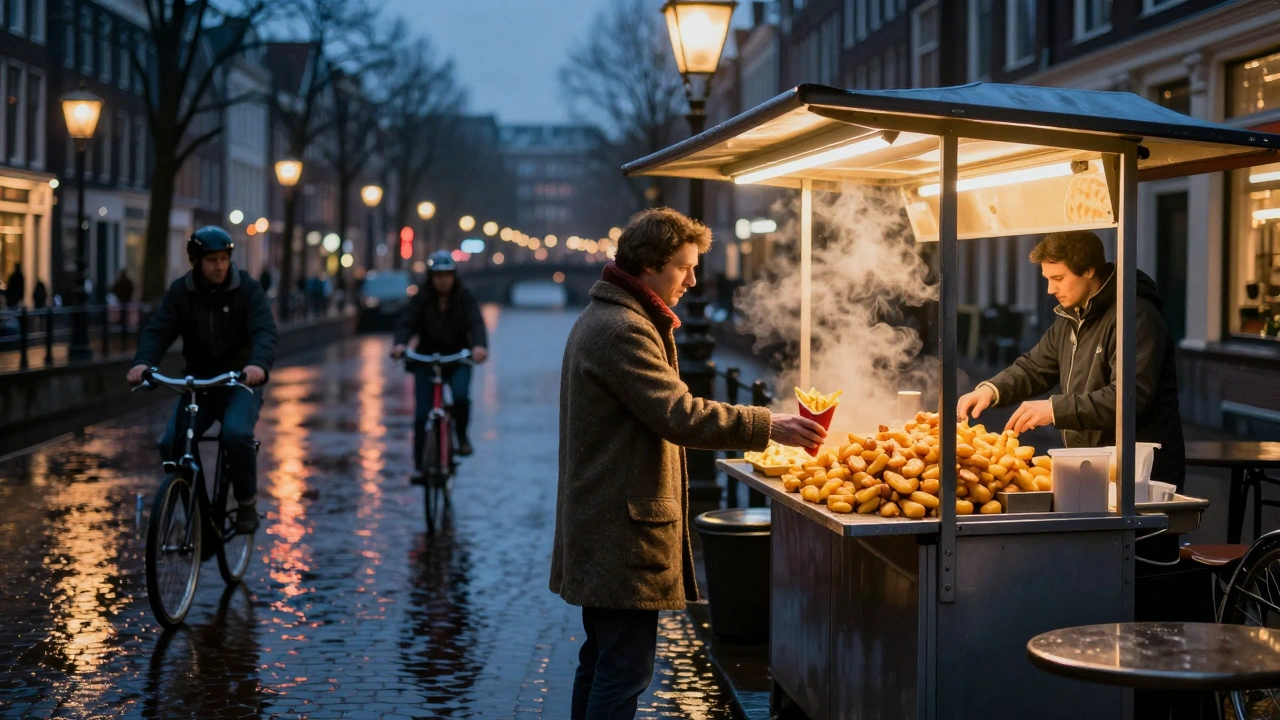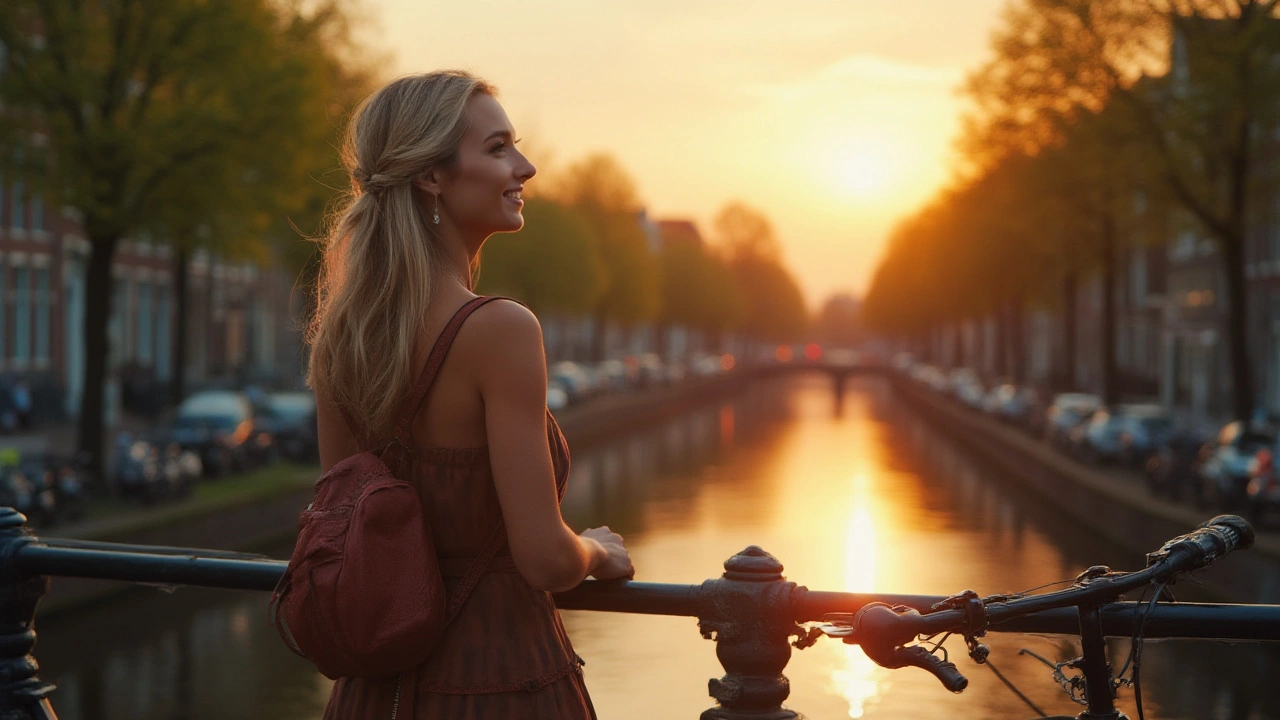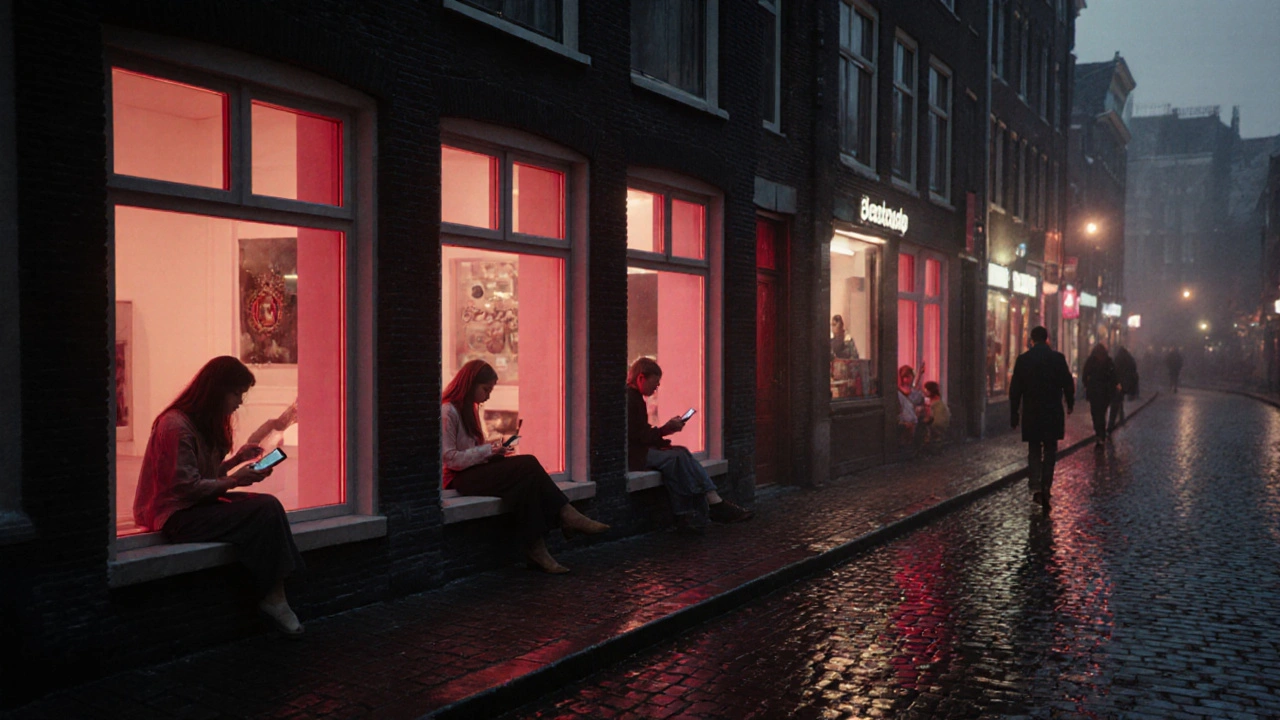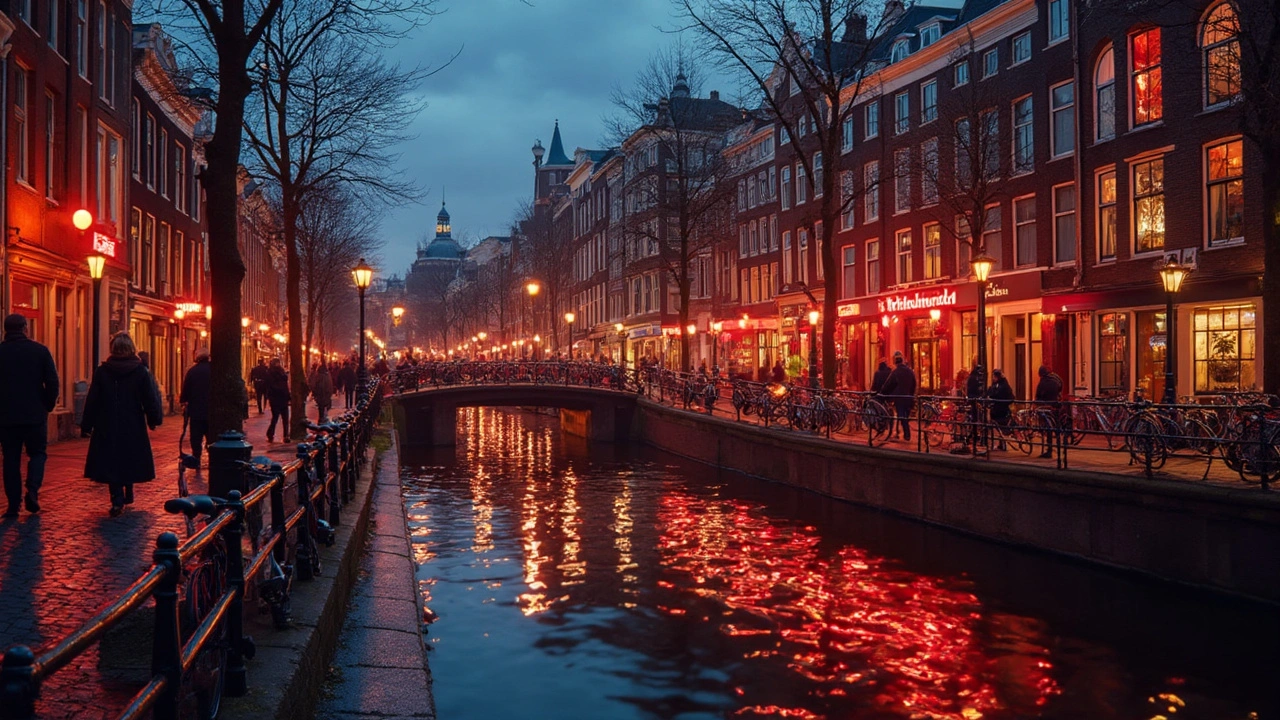
Everybody’s heard wild stories about the Red Light District in Amsterdam, but does it really live up to the rumors? If you drift over to De Wallen—easy to find from Centraal Station, right in the heart of Amsterdam—you’ll run straight into this infamous part of town. Day or night, there’s a mix of locals grabbing groceries, tourists gawking at neon-lit windows, and the occasional bachelor party in full costume.
The first thing you’ll notice: it’s surprisingly chill during the afternoon. The red-lit windows aren’t all filled up for the crowds until after dark. If you’re planning to visit just to see what the fuss is about, late afternoon or evening is your best bet. And don’t whip out your camera—snapping photos of the workers is illegal and you’ll get called out, fast.
- Setting the Scene in De Wallen
- What Actually Happens Here?
- Safety and Etiquette Tips
- Unexpected Sights Beyond the Red Lights
- Local Food, Drinks, and Hidden Gems
- Should You Go? (And When It’s Not for You)
Setting the Scene in De Wallen
Right in the middle of Amsterdam, De Wallen isn’t just some random block with red lights. It’s the city’s oldest neighborhood, and it’s a wild mix of medieval canals, crooked houses, coffee shops, brothels, snack bars, and even a church—Oude Kerk, the oldest building in Amsterdam, sits smack in the center. You’ll be walking along streets like Oudezijds Achterburgwal and Warmoesstraat, dodging bikes and tourists as you go.
The district is compact but busy—there are about 300 windows where sex workers legally rent space. Locals have a love-hate relationship with the area; the city’s been working to keep things safe and relatively clean, with new rules about where brothels can operate. There are also police around all the time and private security to keep things chill.
If you’re coming on foot, just exit Amsterdam Centraal, hang a right, and after a few minutes, the scenery shifts fast. And yes, you’ll find people of all ages and backgrounds: couples holding hands, groups of friends, business travelers, solo wanderers. Most of the major sights are within a ten-minute walk. Here’s a quick look at what you find here compared to the rest of the city:
| Feature | De Wallen | Rest of Amsterdam |
|---|---|---|
| Bachelor Parties | Common | Occasional |
| Legal Windows | ~300+ | None |
| Police Presence | High | Moderate |
| Late-Night Food | Plenty | Some |
| Historic Buildings | Many | Many |
The area isn’t just about the nightlife. You’ve got quirky museums like the Red Light Secrets Museum of Prostitution, and old-time brown cafes (traditional Dutch pubs) that serve up local bitterballen and cold Heineken. Just be ready for narrow, crowded streets, lots of noise after dark, and neon reflecting in the canals. If you’re the kind of person who likes things busy and loud, you’ll fit right in here.
What Actually Happens Here?
Most people picture the wildest things when they hear about the Amsterdam Red Light District. But let’s cut the noise and get real about what actually goes on. The area, known as De Wallen, is mainly famous for its legal window prostitution. Women rent small rooms with a glass window, stand behind the glass, and if you’re interested, you ask about the price and services. Everything’s up front—no weird street deals or shady setups. All legal, all regulated, and everyone working there is required to have a permit.
But the Red Light District isn’t just about sex work. You’ll see plenty of adult-themed shops selling everything from lingerie to novelty items, legal cannabis coffeeshops, and the Sex Museum (check out the quirky 19th-century photos). Smartshops are everywhere, too, selling legal psychedelics like truffles. The crowd? Mix of tourists, groups of friends doing walking tours, couples holding hands, and even families—especially during the daytime. Restaurants, bars, ice cream shops, cheese vendors, and classic Dutch fries stands are scattered between the windows. There’s also a police station a block away, so safety is a big deal here.
"The Red Light District is unlike anywhere else in the world—not because of its red windows but because it’s so open, safe, and integrated with everyday city life." – Lonely Planet Amsterdam Guide (2024 edition)
Some folks expect to see parties everywhere, but honestly, you’ll find just as many quiet corners and folks going about their daily routines. Police, social workers, and city staff keep a close eye on things, and there are even signs around saying, “Respect sex workers. No photos.”
The system is pretty well organized, as shown below:
| What | How It Works in De Wallen |
|---|---|
| Window Prostitution | Regulated, workers rent windows, legal ages 21+ |
| Coffeeshops | Legal for over-18s, no alcohol sold inside |
| Security | Police stations, CCTV, visible patrols |
| Tourists per year | Nearly 4.5 million (pre-pandemic) |
| Cameras Allowed? | No (especially not at the windows) |
So what’s really happening here? Legal sex work, cannabis cafes, quirky museums, everyday shops, and a crowd that’s more chill than rowdy. It’s unique, that’s for sure, but not the carnival-type chaos many imagine. If you came expecting something wild, you’ll probably leave talking about how ordinary, safe, and surprisingly normal it all felt.
Safety and Etiquette Tips
If you’re walking through the Amsterdam red light district for the first time, a few basic ground rules keep everyone comfortable—locals, workers, and visitors. First off: taking photos or videos of sex workers is totally off limits. This rule isn’t just about manners—it’s a city law. If you try it, you might get a not-so-friendly reminder from security or workers themselves.
At night, the crowds can get packed, so keep your stuff close. Pickpocketing happens, especially right around Oudezijds Achterburgwal and Warmoesstraat. Leave your passport in your hotel safe, bring only what you need, and keep your phone in a front pocket or zipped bag.
- Don’t block the sidewalks. The windows are right on busy walking paths, and stopping for too long jams up the flow really quickly.
- Be respectful with your comments. Don’t shout, point, or act rowdy—workers and locals have zero tolerance for rude behavior.
- Deal with money inside, not out on the street. If you’re booking a private service, agreements are discussed inside, away from prying eyes and phone cameras.
- Watch out for bikes! Cyclists zoom through even late at night. Always double-check before stepping onto any of the narrow streets or crossing over canals.
- No open alcohol. It’s illegal to drink openly, even though it might feel like a party. Save it for bars like Café Remember or De Prael brewery.
The city has police and security staff everywhere, and there are emergency buttons near some windows. This actually makes De Wallen safer than people think. But use your street smarts—avoid dark alleyways at night and don’t follow strangers to after-parties.
| Safety Fact | What to Know |
|---|---|
| Number of security cameras in De Wallen | Over 200 (City of Amsterdam data, 2024) |
| Police presence (weekend nights) | Average 20+ patrols in the area |
| Common fine for public photos | €95 on the spot |
| Pickpocket reports per month (average) | Between 70 and 120 |
Honestly, if you stick to these basics, you’ll be fine and locals won’t give you the side-eye. The red light district works because most people follow these rules—it’s part of why De Wallen keeps running smoothly, no matter how crowded it gets.
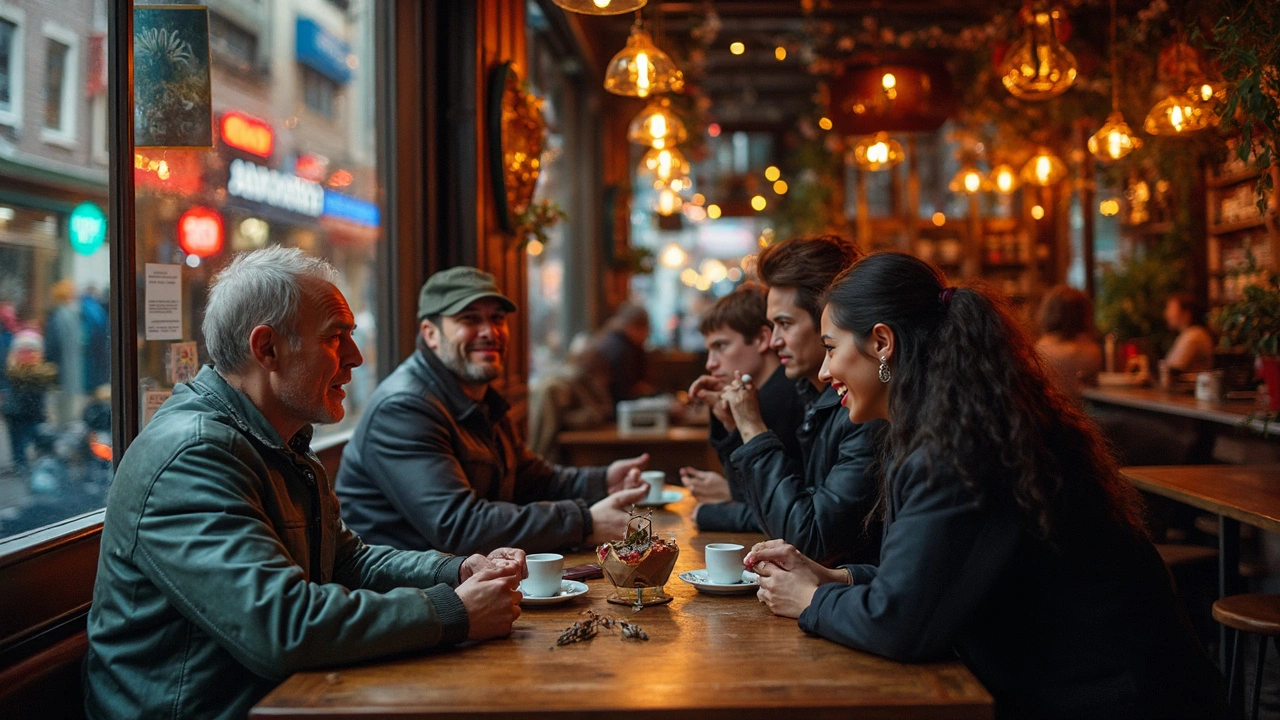
Unexpected Sights Beyond the Red Lights
Think the Amsterdam Red Light District is just about neon windows? There’s way more going on here. Step off the main alley, and you’ll find centuries-old buildings, cozy bars, and some surprisingly peaceful corners.
De Wallen is actually one of the city’s oldest neighborhoods. You can spot the Oude Kerk (Old Church)—Amsterdam’s oldest building—right in the middle of all the craziness. It dates back to 1306 and definitely stands out with its gothic style. Inside, you’ll sometimes stumble on modern art exhibits or organ concerts. A church surrounded by red lights—only in Amsterdam.
If you geek out about quirky museums, this area has a bunch. There’s the Museum of Prostitution (Red Light Secrets) where you can actually sit in one of the infamous windows, and the Erotic Museum, which is more goofy than scandalous. For something different, the Hash Marihuana & Hemp Museum shows how the Dutch kept cannabis culture both historic and mainstream.
Need a break from the crowds? Escape into the twisting back alleys and check out these hidden spots:
- Brouwerij de Prael: Local brewery with craft beer, live music, and a real local vibe.
- Café Stevens: Classic brown café for a chilled-out drink in the early evening.
- Nieuwmarkt: A pretty square where you’ll catch Saturday markets and a mix of local food stalls.
A lot of people miss Chinatown, just a street away. It’s packed with Asian supermarkets, the Zeedijk Buddhist temple, and affordable eats (try the dim sum at Nam Kee). This isn’t your average tourist food street—locals actually go here if they’re craving something besides Dutch fries.
Here’s a quick rundown of sights, their locations, and what you can do there:
| Spot | What’s Special | Best Time |
|---|---|---|
| Oude Kerk | Historic church, art, concerts | Daytime |
| Red Light Secrets | Interactive museum, behind-the-scenes look | Late afternoon |
| Brouwerij de Prael | Local beer, live music | Evening |
| Nieuwmarkt | Markets, chill atmosphere | Saturday morning |
| Chinatown/Zeedijk | Food, culture, temple | Anytime |
The Red Light District isn't just about the windows. Stick around, dig a little deeper, and you'll find stories and places you won't expect just by glancing at the glow from outside. That’s what makes this part of Amsterdam worth the hype.
Local Food, Drinks, and Hidden Gems
Grabbing a bite in the Red Light District doesn’t mean settling for basic fast food—you’ve got choices right at your feet. For the real Amsterdam vibe, walk into Café Papeneiland, one of the city’s oldest brown cafes. The apple pie here is legit famous, and you’ll spot both tourists and locals digging in. If you’re craving something hearty, the tiny Knooppunt serves up bitterballen with mustard, perfect with a cold Dutch beer.
Looking for classic street food? Try a fresh stroopwafel or those paper cones of hot frites from Manneken Pis, a spot always swamped for a reason. Skip the ketchup and ask for “patat oorlog” (fries with mayo, satay sauce, and onions) for the full local experience. And don’t ignore FEBO’s crazy snack walls—you get krokets straight from a vending machine. Weirdly satisfying after some late-night exploring.
If you want drinks, most bars let you relax with a Grolsch, but keep an eye out for Wynand Fockink, a tiny tasting room that’s been around since the 1600s. They pour jenever, a Dutch gin, in a tiny glass that you’ve got to sip without picking up. Awkward the first time, but fun once you get it.
The Red Light District’s not just about neon and crowds. There are low-key places tucked away, like the Oude Kerk, the city’s oldest building. Just a minute’s walk from the buzz, it’s calm and unexpectedly peaceful inside. Walk further east and stumble into tiny art galleries—Arti et Amicitiae sometimes hosts wild pop-up shows.
For cool souvenirs, avoid the tacky shops and duck into Condomerie, the world’s first specialty condom store, opened back in the ’80s. It’s weird, a little funny, but also pure Amsterdam. If you’re more about coffee and people-watching, Latei does both well and serves quirky retro furniture along with your cappuccino.
- Amsterdam’s Red Light District has good food beyond the usual tourist traps.
- Try local beer, jenever, and street snacks if you want the full Dutch experience.
- Hidden cultural spots—like Oude Kerk and small galleries—are right in the maze.
- Dive into odd shops for souvenirs that are more fun and way less lame than fridge magnets.
Should You Go? (And When It’s Not for You)
So, who really gets something out of visiting the Amsterdam Red Light District? If you’re curious about how sex work operates legally, want to see how tolerant a city can get, or you just feel like people-watching in a place that’s totally different from anywhere else, you’ll get a kick out of it. Plenty of people just wander through as part of a walking tour—Rederij P. Kooij does cheap canal trips that float right past the area. Couples, solo travelers, and even older folks make their way here, especially for the safe, open vibe and quirky museums like the Red Light Secrets Museum.
But here’s the thing—not everyone is going to have a good time. If you can’t handle crowds (it gets nuts after 8pm), you’ll probably want to skip the peak hours. Families with young kids might feel out of place. For folks hoping for a wild party, you’ll find more of a chill bar scene than a rager—Leidseplein is way better if clubs are your style. And if you’re hoping to meet the "real" locals, you’re probably better off in Jordaan or Oost rather than De Wallen.
You’ll want to know what’s actually legal and safe. Sex work is permitted here, but drugs (other than cannabis in licensed coffeeshops) aren’t. Watch your pockets—pickpockets love distracted tourists. Got expectations about what you’ll see or who you’ll meet? Check reality at the door, because it’s way more low-key than most people imagine.
Here’s a cheat sheet to figure out whether a visit makes sense for you:
- Want to see one of Amsterdam’s most famous sights for yourself.
- Comfortable around adult themes and diverse people.
- Interested in the history of sex work or Dutch cultural quirks.
- Okay with big crowds and busy streets at night.
You might want to pass if:
- You’re traveling with kids and avoiding adult topics.
- You get anxious in big, noisy crowds.
- You’re not interested in nightlife or adult culture.
- You’d rather get to know the “hidden” Amsterdam neighborhoods.
And just for perspective, here’s how the Red Light District stacks up with other popular Amsterdam areas:
| Area | Main Vibe | Peak Hours | Ideal For |
|---|---|---|---|
| Red Light District (De Wallen) | Adult-oriented, touristy, buzzy | 8pm–1am | Curious tourists, cultural explorers |
| Jordaan | Chill, local, artsy | All day | Foodies, art lovers |
| Leidseplein | Party, music, nightlife | 10pm–late | Night owls, clubbers |
| Oost | Up-and-coming, hip, multicultural | Evenings | Young locals, café hoppers |
Bottom line: The district is one of Amsterdam’s most famous quirks, but it’s not for everyone. Know what to expect, follow the rules, and you’ll either walk away amused, surprised, or glad you skipped it in favor of a stroopwafel and a canal stroll.

